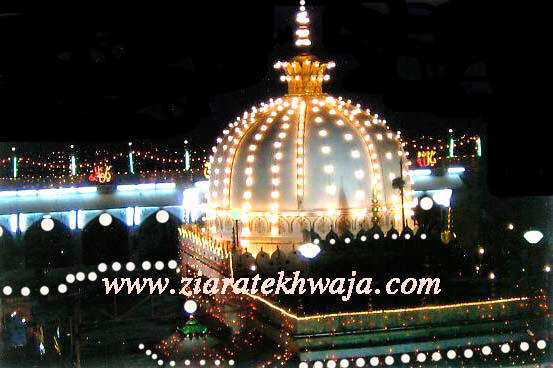When appointing him a khalifah, his Shaikh placed on his head a Chishtia topi of four sections and said:
“This symbolizes four renunciations. Renunciation of the world, renunciation of the Aakhirah except Allah Ta’ala, renunciation of sleep and renunciation of nafsaani desires.”
Hazrat spent the greater part of his life in traveling. Once he passed through a city of fire-worshippers. A huge fire had been lit. Hazrat sent his khadim to bring some fire for preparing food, but the people refused, saying that the fire is for worship, hence it was not permissible according to their religion to give any of the fire.
Hazrat went to them and explained that the fire is not worthy of worshipping and that only Allah Ta’ala, The Sole Creator should be worshipped. Fire itself is a creation. He told them that by worshipping the fire, it will burn them (on the Day of Qiyaamah). But, if they refrained from worshipping it, the fire will not burn them on the Day of Qiyaamah. They retorted:
“You do not worship the fire. So enter it and prove that it will not burn you.”
Hazrat made wudhu and performed two raka’ts Salaat. Then taking the chief’s little child went into the fire. He remained two hours inside the fire which did not affect even the little child. This type of action is called Wilaayah Ibrahimi which means the execution of the act as a reflection of Hazrat Nabi Ibrahim’s (alayhis salaam) Mu’jizah. All the fire-worshippers present, together with their chief, accepted Islam. The chief was named Abdullah and his son Ibrahim. They joined the company of Hazrat Shaikh.
Khwaja Muinud Deen says that once he was on a journey with Hadhrat Uthman Harْni. When they reached a river, there was no boat to take them across. Hazrat Shaikh instructed him to close his eyes. After a few moments Khwaja Muinud Deed was told to open his eyes. He saw that they had already crossed the river and were on the other side.
A man came to Hazrat Shaikh saying that his son had disappeared for a long time and was untraceable. He, therefore, requested Hadhrat for dua. Hadhrat went into muraaqabah (meditation) for a short while, and said:
“Your son has arrived home.”
When he returned home, he was astonished to see his son. Immediately, he brought his son to Hazrat Shaikh to express his gratitude. It transpired that the son had been held a prisoner on an island. He narrated:
“At this time suddenly a saintly man looking like Hazrat Haroni appeared and told me to put my feet on his feet and to close my eyes. After a few moments he instructed me to open my eyes. When I opened my eyes, I was at home.”
In one day and night, Hazrat Haroni had delivered Hazrat Khwaja Muinud Deen to the goal of Sulook, i.e. he attained (Divine Proximity). (The high degree of Divine Proximity which is the goal is known as Wusool ilallaah.)
Hazrat Shaikh said that a man who has in him these three characteristics may
regard himself to be Allah’s friend:
1) Generosity like the sea
2)
Affection like the sun.
3) Humility like the ground.
According to Khwaja Muinud Deen, once Hadhrat Harْni was present at the burial of a spiritual brother (i.e. mureed of the same Shaikh). After burial, the people spread out while Hazrat remained there for some time. The state of the Qabar’s inmate was revealed to him. The Angels of Athaab (Punishment) approached the inmate of the grave because of a certain crime he had committed. Khwaja Usman Harْni said to the Angels that he (the inmate of the grave) is one of his associates. As a result of his intercession the mayyit was saved from punishment.
His Demise
Hazrat Haroni died on the 5th Shawwaal 617 Hijri. There are other conflicting versions of the year of his demise as well. He is buried in Makkah Mukarramah. He had five famous mureedan, viz. Khwaja Syed Muinuddin Chishty Ajmeri, Khwaja Najmuddin Sughra, Shaikh
Sْri Mangohi and Khwaja Muhammad Turk. In Hindustan the first link of the Chishti Chains is Hazrat Khwaja Muinuddin Chishty Khwaja Syed Fakhruddin Gurdezi Ajmeri who is Khadim-E-Kaas of Khwaja Ajmeri & Peer Bhai.
